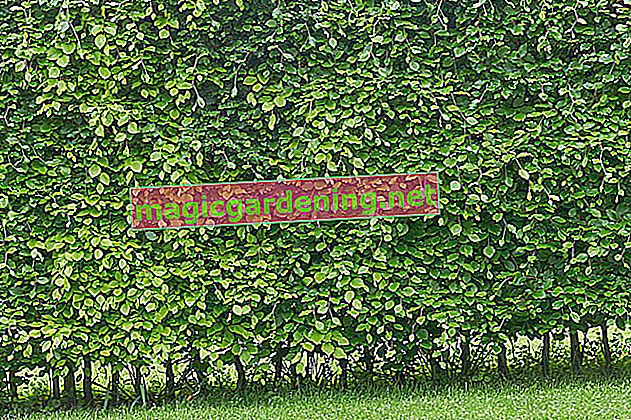
Fast growing shrubs for a dense hedge
In order to obtain a relatively dense privacy screen as soon as possible after planting, fast and strong growing types of plants should be selected for a living fence. In this regard, the following hedge plants have proven their worth:
- Thuja occidentalis 'Brabant'
- various types of privet
- young beeches
- Cherry laurel
- young spruce
also read
- A living privacy screen as a design element for the garden, balcony and terrace
- Thread a privacy screen into the fence
- The cherry laurel hedge - an evergreen privacy screen instead of a dreary fence
However, always pay attention to the two sides of the coin: Fast-growing hedge plants can quickly achieve the stated goal of a dense privacy screen with a natural character. But they also require a certain amount of care in order to keep the growing willingness to grow, especially in old age, under control in accordance with local conditions and the regulations of neighboring law. So, before planting, you should not least ask yourself whether you can prune back up to two times a year so that these hedge plants do not grow over your head.
Plant a thick privacy screen made of bamboo and other ornamental grasses
There are also alternatives to the classic hedge trees if you want to create a living privacy fence in the garden. Some hardy bamboo varieties also grow quickly and vigorously after a few years in one location. All the more, however, the maxim of thorough planning applies to these: Unless they are clump-forming bamboo varieties without runners, precautions must be taken with the planting in terms of a suitable rhizome barrier. In this way you can be sure that the bamboo really does hold off prying eyes along the property line and does not overgrow the entire garden within a few years. Ornamental grasses that sprout annually are also suitable more or less year-round as privacy screens, as the dry shoots are simply tied together over the winter,only to be cut off in the following spring before new shoots.
Let climbing plants grow up on a climbing aid
A particularly space-saving variant of the living fence can be realized with vigorous climbing plants. As climbing plants on the garden fence and next to the terrace, knotweed, trumpet flower and wild wine offer the advantage that they require little space on a slim support structure and, with their flowers, also provide a lot of food for insects and other garden residents.
Tips
A living fence sometimes not only provides a sound-absorbing effect on annoying street noise and improved protection against pollution, but it also offers many bird and insect species valuable nesting opportunities and feeding places.








